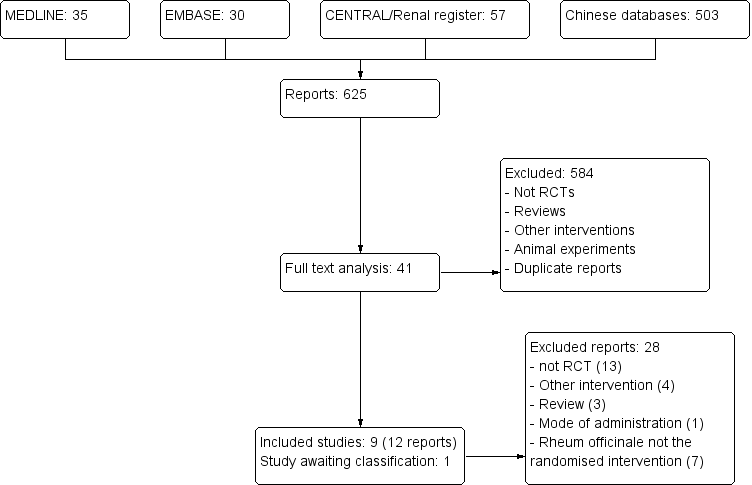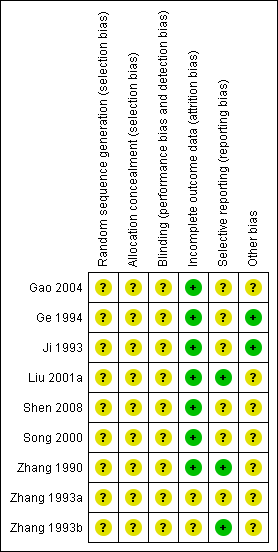Contenido relacionado
Revisiones y protocolos relacionados
Edmund YM Chung, Marinella Ruospo, Patrizia Natale, Davide Bolignano, Sankar D Navaneethan, Suetonia C Palmer, Giovanni FM Strippoli | 27 octubre 2020
Ling Zhang, Xiaoxi Zeng, Ping Fu, Hong Mei Wu | 23 junio 2014
Patrizia Natale, Suetonia C Palmer, Sankar D Navaneethan, Jonathan C Craig, Giovanni FM Strippoli | 29 abril 2024
Tess E Cooper, Claris Teng, David J Tunnicliffe, Brydee A Cashmore, Giovanni FM Strippoli | 19 julio 2023
Tripterygium wilfordii Hook F (un medicamento chino tradicional) para el síndrome nefrótico primario
Yizhi Chen, Zhixiang Gong, Xiangmei Chen, Li Tang, Xuezhi Zhao, Qing Yuan, Guangyan Cai | 11 agosto 2013
Hong Wei Zhang, Zhi Xiu Lin, Chuanshan Xu, Connie Leung, Lai Sum Chan | 22 octubre 2014
Nicholas B Cross, Angela C Webster, Philip Masson, Philip J O'Connell, Jonathan C Craig | 8 julio 2009
Ismail Yahaya, Olalekan A Uthman, Muhammed Mubashir B Uthman | 31 enero 2013
Mei Feng, Wei Yuan, Renzhong Zhang, Ping Fu, Taixiang Wu | 5 junio 2013
Davide Bolignano, Suetonia C Palmer, Marinella Ruospo, Carmine Zoccali, Jonathan C Craig, Giovanni FM Strippoli | 14 julio 2015
Respuestas clínicas Cochrane
Jane Burch, Saurabh Parasramka | 27 noviembre 2018












